Nginx For Beginners
Performance
Demo Caching
In this lesson, you’ll compare Nginx acting as a reverse proxy without caching and with caching to see how offloading static assets can improve backend performance.
1. No-Cache Reverse Proxy
When caching is disabled, every client request passes through Nginx directly to Apache. Assets like CSS, JavaScript, and images are fetched from the backend on each hit.
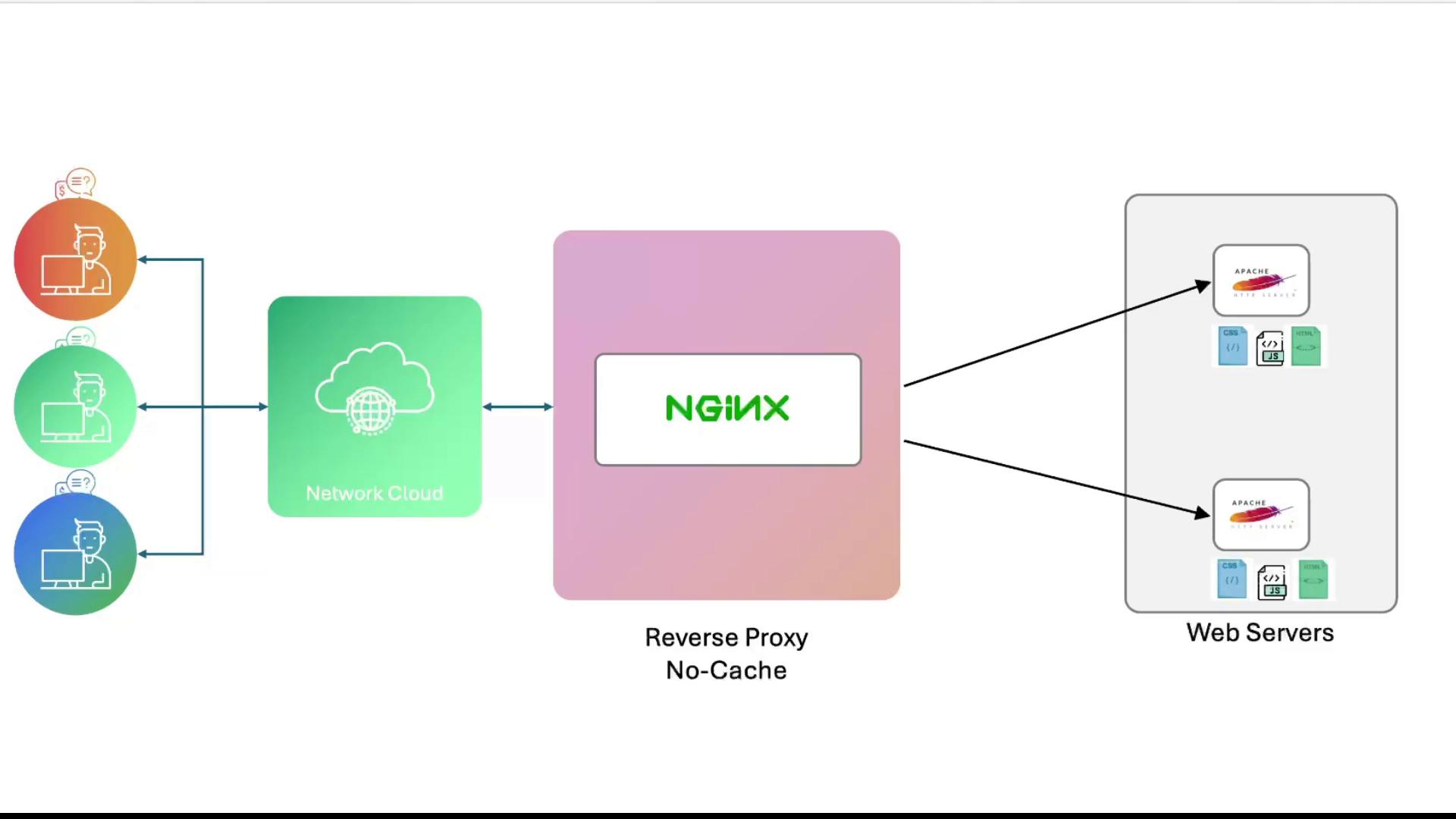
2. Caching Enabled
With proxy_cache enabled, Nginx stores the first response and serves it on subsequent requests. The Apache servers only handle the initial fetch.
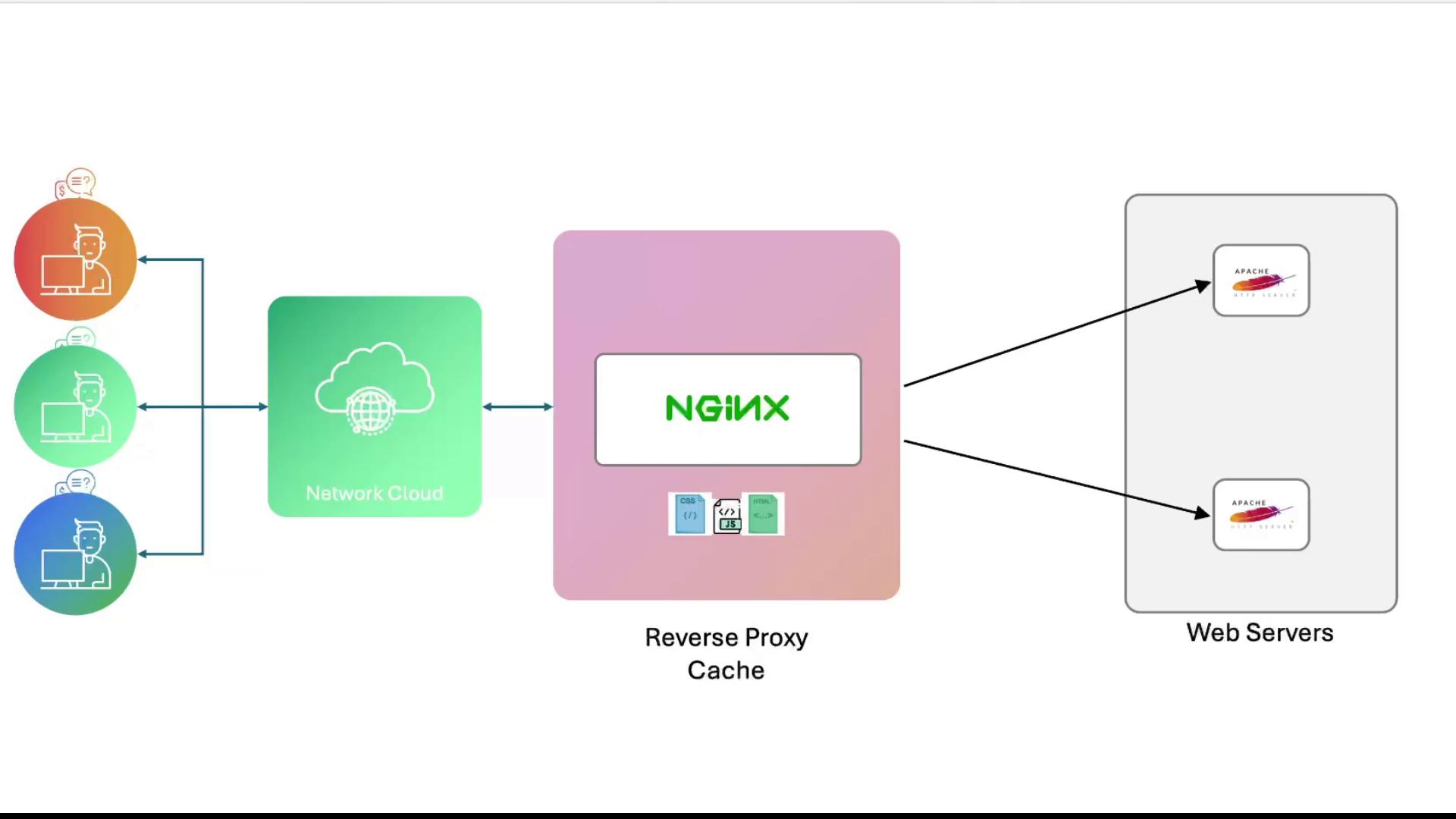
3. Baseline: Watching Apache Logs
First, observe raw traffic on your backend nodes:
# On node01
tail -f /var/log/apache2/access.log
# On node02
tail -f /var/log/apache2/access.log
Reload https://example.com in your browser. You’ll see repeated GETs:
example.com:443 127.0.0.1 - - [17/Feb/2025:01:01:34 +0000] "GET / HTTP/1.1" 200 11213 "-" "curl/7.81.0"
example.com:443 192.231.221.10 - - [17/Feb/2025:01:20:34 +0000] "GET /assets/css/main.css HTTP/1.0" 200 10649 ...
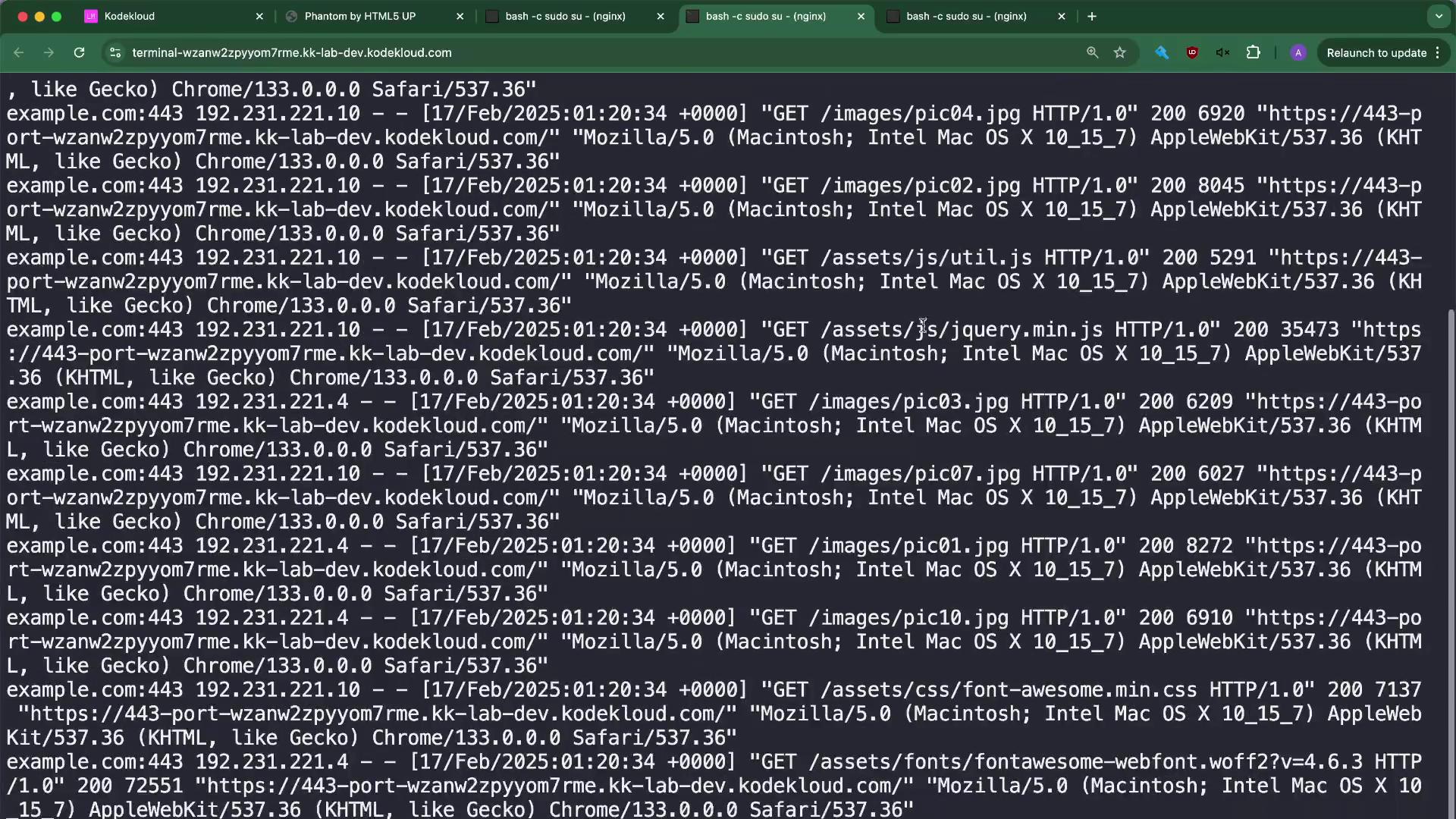
Inspect DevTools → Network and notice no Cache-Control headers are present.
4. Inflate Asset Sizes for Demo
To highlight caching benefits, increase each JPEG to about 20 MB on both nodes:
# On node01 and node02, in /var/www/html/images
for file in *.jpg; do
fallocate -l 20M "$file"
done
Verify sizes:
ls -lh *.jpg
# pic01.jpg 21M pic02.jpg 21M ...
Now reload the site and watch logs—each large asset streams from Apache:
"GET /images/pic06.jpg HTTP/1.0" 200 21047957 "..." "Mozilla/5.0..."
Warning
Creating large files can consume significant disk space. Clean up after testing.
5. Configure Nginx Caching
5.1. Global Cache Settings
Edit /etc/nginx/nginx.conf and, inside the http { ... } block, add:
##
# Caching
##
proxy_cache_path /var/lib/nginx/cache levels=1:2 keys_zone=app_cache:10m;
proxy_cache_key "$scheme$request_method$host$request_uri";
proxy_cache_valid 200 302 10m;
proxy_cache_valid 404 1m;
Note
Ensure /var/lib/nginx/cache exists and is writable by the Nginx user.
For more details, see the Nginx Proxy Caching Guide.
Here’s a quick overview of the directives:
| Directive | Description | Example |
|---|---|---|
| proxy_cache_path | Defines cache location, hierarchy, and zone | /var/lib/nginx/cache levels=1:2 keys_zone=app_cache:10m; |
| proxy_cache_key | Constructs a unique key for each request | "$scheme$request_method$host$request_uri" |
| proxy_cache_valid | Sets TTL for cached responses by status code | 200 302 10m; 404 1m; |
5.2. Server Block: Enable Cache
Open your SSL virtual host (/etc/nginx/sites-available/example-https) and under server { listen 443 ssl; ... }, update the location / block:
# Add cache-control header for clients
add_header Cache-Control "public, max-age=3600";
location / {
proxy_set_header Host $host;
proxy_set_header X-Forwarded-For $proxy_add_x_forwarded_for;
proxy_set_header X-Forwarded-Proto $scheme;
proxy_set_header X-Proxy-Cache $upstream_cache_status;
proxy_cache app_cache;
proxy_pass https://example;
}
Test and reload:
nginx -t && nginx -s reload
6. Log Cache Status in Apache
To capture HIT or MISS, add %{X-Proxy-Cache}i to your Apache log format in /etc/apache2/apache2.conf:
LogFormat "%v:%p \"%{X-Forwarded-For}i\" \"%{X-Forwarded-Proto}i\" \"%{X-Proxy-Cache}i\" %h %l %u %t \"%r\" %>s %b \"%{Referer}i\"" vhost_combined
Reload Apache:
apachectl -t && systemctl restart apache2
7. Verify Cache Directory and Hits
Initially, the cache directory is empty:
ll /var/lib/nginx/cache
# only ./ and ../
Load the site once. Then check again:
ll /var/lib/nginx/cache
# subdirectories under the hex levels, each storing cached files
Tail Apache logs to see initial MISS entries:
example.com:443 "..." "MISS" 192.231.221.4 -- [17/Feb/2025:01:35:09 +0000] "GET /images/pic01.jpg HTTP/1.0" 200 21049497 ...
Subsequent requests don’t hit Apache, confirming Nginx serves from cache.
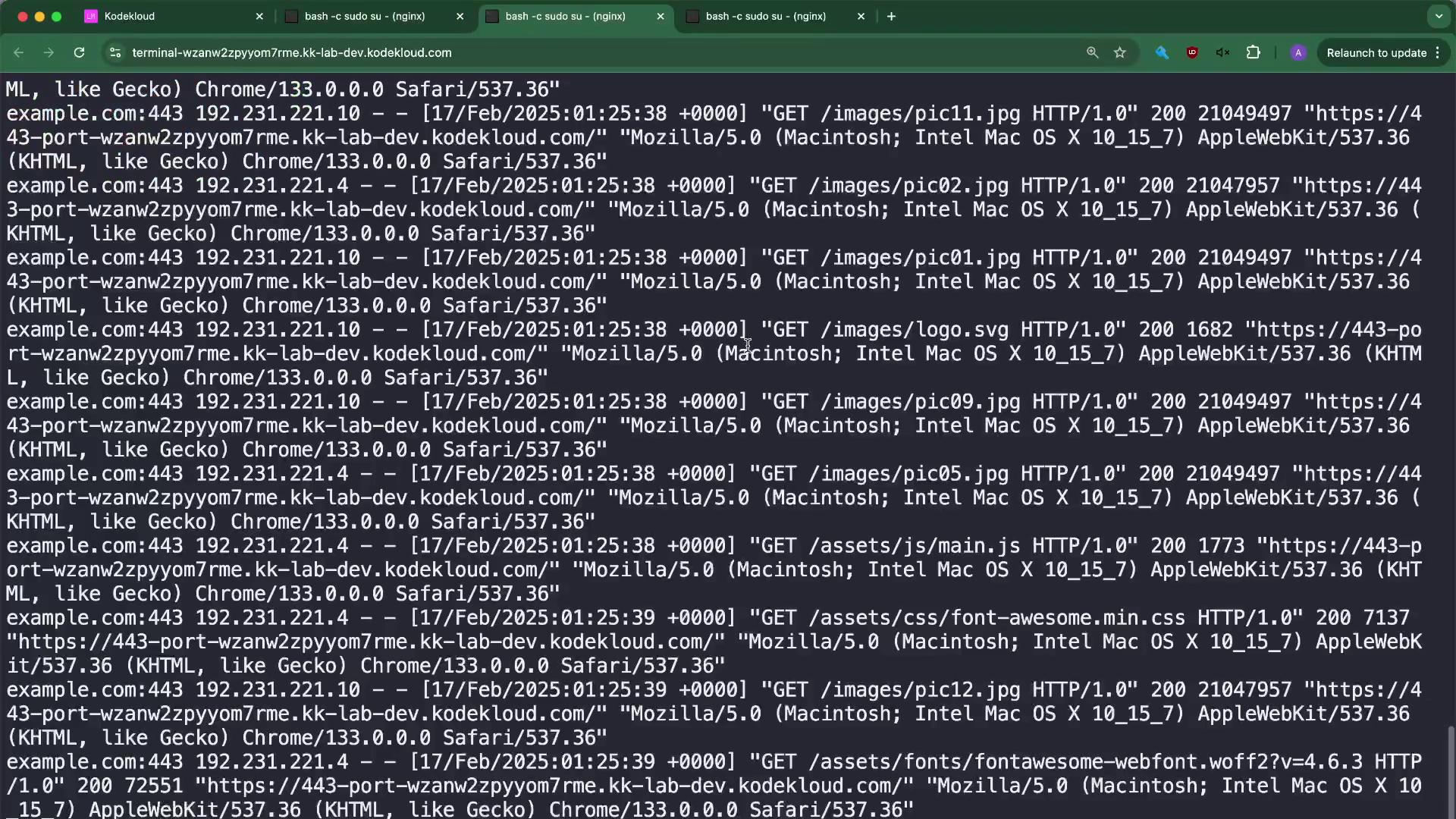
You can also watch Nginx’s access log for 206 partial responses:
tail -f /var/log/nginx/access.log
# 206 partial responses served by cache
192.231.221.4 - - [17/Feb/2025:01:38:22 +0000] "GET /images/pic12.jpg HTTP/1.1" 206 2097136 "-" "Cloud-CDN-Google (GFE/2.0)"
8. Browser Network View
Finally, use your browser’s Network panel to verify that large assets load instantly from cache:
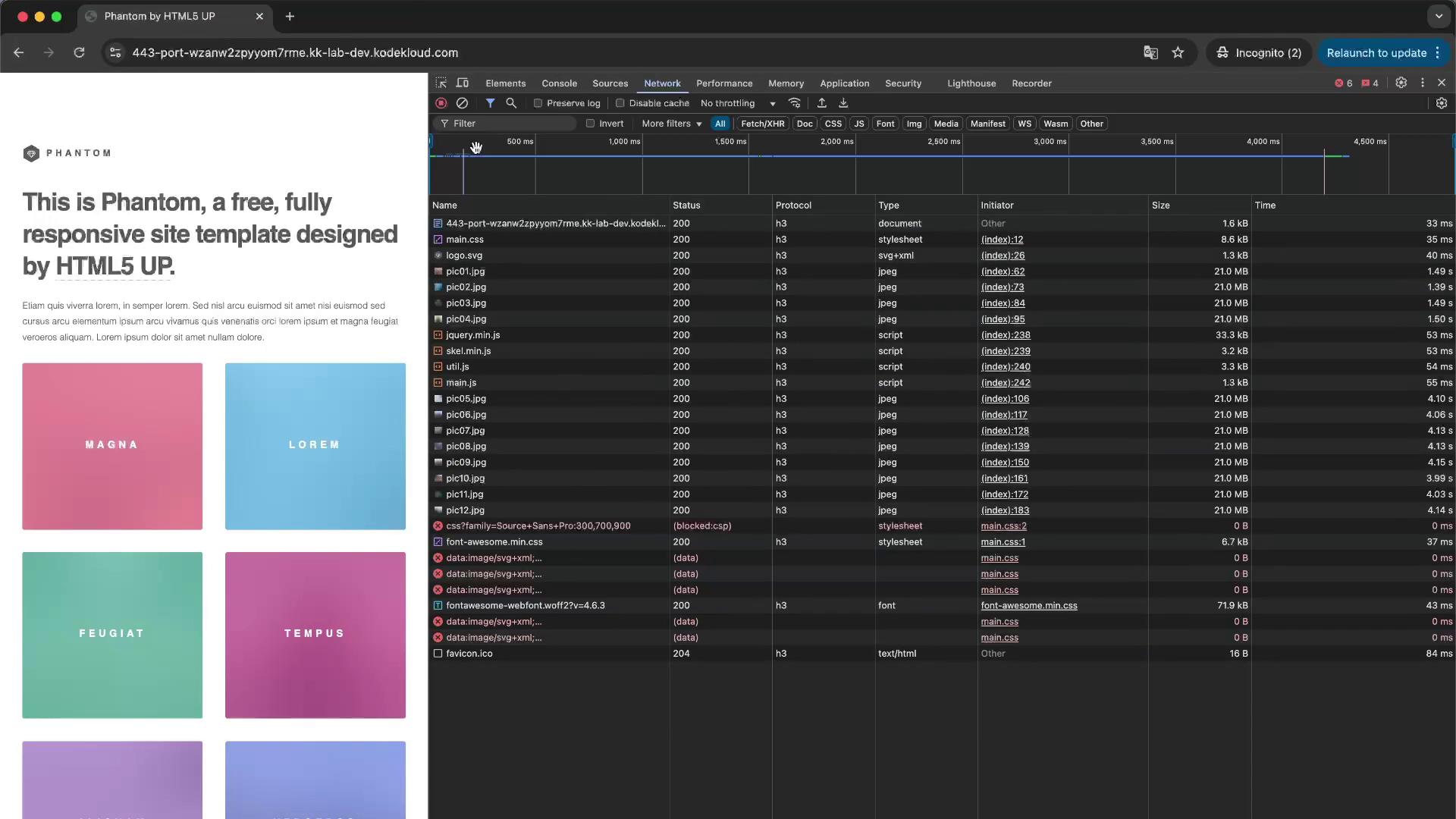
Next Steps
This demo underscored how caching reduces backend load. For even better performance, consider enabling response compression with gzip or brotli next.
Watch Video
Watch video content
Practice Lab
Practice lab